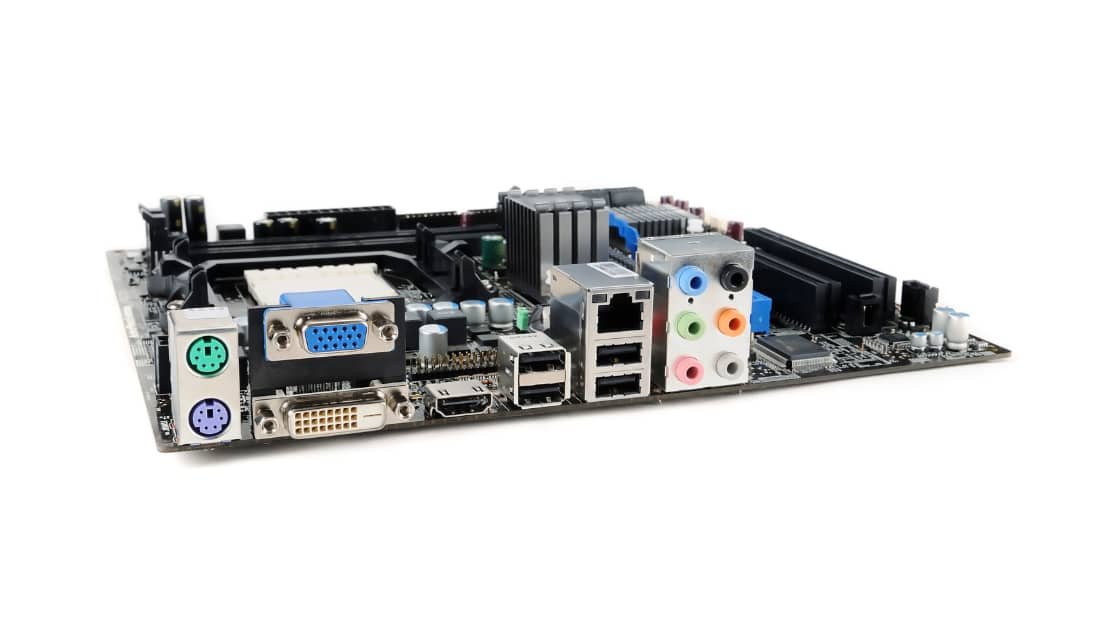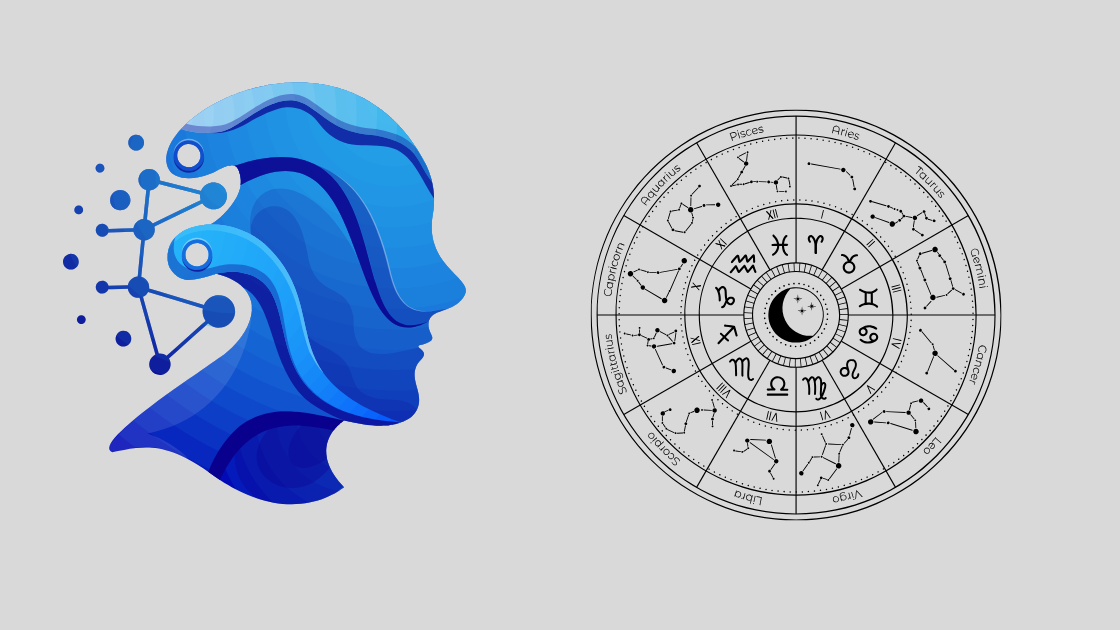The part of the motherboard of a computer, also referred to as the printed circuit board, manages power distribution and facilitates data transfer to and from the CPU, RAM, and other hardware components. Different motherboards are available, each intended for a specific processor and memory configuration. As a result, the motherboard houses practically all of the computer’s key components, including the CPU, memory, expansion slots, and more. This tutorial will walk you through each part of a motherboard and explain what it does.
Components and Functions Part Of The Motherboard
Standard motherboard components occupy at least a dozen slots on the motherboard.
The motherboard’s CPU socket

This is the location of the computer’s central processor unit. If you’ve ever looked at your computer’s Task Manager, you may have noticed a CPU category. An MTTF value nearing 100% indicates fast data processing and transport. Updating the operating system or doing data purging can sometimes fix issues. If that doesn’t work, a more powerful CPU might be required. There are several providers who are sourcing and delivering electronic components for businesses and personal uses. You can contact these services to get these components.
BIOS and CMOS

The basic input/output system (BIOS) and the complementary metal-oxide-semiconductor (CMOS) are required for regular computer operation (CMOS). All of the motherboard’s settings are saved in the BIOS chip. Updates to a component’s operating capacity are sometimes made available by computer manufacturers.
A computer’s BIOS chip includes the basic instructions needed to get it up and running. The kernel of the operating system (OS) is then booted up. The OS takes charge as long as there are no problems. The CMOS provides the necessary power to keep this device running. When the computer is turned off or unplugged, the tiny battery ensures that the data is not lost. Hardware and disc drive information can be lost if the CMOS fails. An operating system error occurs as a result of this.
Also read: How to Overclock Ryzen 5 2600x
Power connector

The mains power supply is connected to the power connection. Using this, the computer motherboard parts are supplied with electricity. It is common for the connector to have 20 or 24 pins. Additional power is provided through other four- and eight-pin connectors on newer models.
Also read: What Does 2GB And 4GB Graphics Card Means
The computer’s Cache Memory
In computing, cache memory serves as a buffer between the main memory and the central processing unit (CPU). It stores data and instructions that are regularly requested so that the processor may access them quickly. In addition, the motherboard’s Level 2 or secondary cache can be enhanced by external cache memory.
Memory slots

RAM modules are housed in memory slots found in the motherboard’s right-hand corner. Depending on the model of the board, the number of places may vary. Memory is a critical motherboard part for keeping your computer running at peak efficiency. Memory modules serve primarily as short-term storage devices. Instantaneous action is taken on stored data that is read and interpreted. An example is the temporary storage of an executed program in these modules.
The capacity of current computer memory slots:
- There are two types of single-in-line memory modules (SIMMs).
- Dual in-line memory chipset (DIMM).
- Module with twice the data transfer rate (DDR). To keep up with the times, a fourth-generation model recently took the place of the previous generation.
The majority of motherboards have empty memory slots. If more temporary storage space is required, this feature makes it possible for users to do so. You need to check your system’s setup to see what the RAM version requires.
In the last few months, the industry has seen the introduction of servers and laptops that use RAM. The hard drives in these computers are not included. Instead, data is temporarily stored in memory and then deleted during a hard or soft reboot, depending on how the memory is managed. An example of a RAM-only computer can be found in Google’s Chromebook, released in 2012.
ROM chip
Reading-only memory (ROM) chips, in contrast to RAM cards that temporarily store data while the computer is in operation, are crucial to the device’s initialization. You may find all of the information you need to begin the initialization process here. In addition, when the machine is turned off, the data stored in the ROM remains preserved. After shutting down, data saved in RAM is deleted.
Video card slot
The video card slot installs a circuit board for a desktop or laptop computer’s display and color management. This is referred to as PCI Express (PCI-Express) when it comes to contemporary motherboards. Compared to the previous accelerated graphics port, this one allows for faster processing and crisper images (AGP).
There may not be a slot for a video card on lower-end PC motherboards. On the other hand, high-end gaming systems have numerous places for better graphics.
A video card’s ports may include ones for the following:
- Multimedia interface with high definition (HDMI)
- To connect the controller to the monitor through DVI, you will need:
- Display Port
- USB-C, is a single cable that carries both data and power.
Also read: How Much Does It Cost To Build a Gaming PC
Audio card slot
These motherboard ports allow for converting electrical signals into audio signals using unique cards. Depending on the manufacturer’s offerings, there are several types of ports in a laptop’s or PC’s case back. Some examples include microphones, external speakers, audio recorders, and game joysticks that can be connected via the 3.5mm connection.
Slots for expansion
Expansion slots on a motherboard allow you to install additional PCI-compatible devices. A PC’s capabilities can be enhanced by installing one of these. There are a few more instances that may be included:
- a device that records video
- A device for playing sound.
- Improved graphics card
- In addition, there’s a USB expansion card.
The motherboard’s architecture determines how many expansion slots are available. More places are public on more powerful PCs and laptops than PCs and notebooks than standard models.
Northbridge and Southbridge
A heat sink is a piece of metal that sits at the bottom-right of current motherboards. As a result, the Northbridge and Southbridge of the computer are kept safe from overheating. Memory, video card, and CPU all share Northbridge’s responsibility for managing data flow. The Southbridge, a second chip, controls the data flow between the processor and peripherals like sound or network devices, such as USB ports.
The Northbridge is now integrated into today’s CPUs. As a result, they can perform more rapidly and with less lag than machines with slower processors. The physical motherboard still has the Southbridge chip. The heatsink usually covers it. Its temperature is stable since it doesn’t overheat during normal PC usage.
I/O ports on the front
Power switches, LED indicators, and reset buttons are all connected to these ports. In addition, these ports can be used for audio and USB connections. On the bottom of the motherboard, they’re usually found.
IDE and SATA ports
Serial Advanced Technology Attachment (SATA) and integrated drive electronics (IDE) ports connect a storage device. This contains a CD/DVD/Blu-ray disc drive that reads and writes to these types of discs. Rear I/O connectors, often known as IDE ports on earlier motherboards, are used to connect external devices. On the other hand, SATA interfaces are the new standard since they are faster.
Manufacturers are increasing SATA updates in the motherboards they produce nowadays. Because optical drives aren’t bandwidth hogs like internal or external solid-state hard drives, they don’t have the same impact on system performance. Consequently, motherboards may include both second- and third-generation SATA ports on a single board.
A different color denotes specific peripherals on these ports. For example:
- A pink 3.5mm jack port signifies the presence of a microphone.
- The 3.5mm jack port on speakers and corded headsets is shown in dark green.
- The video graphics array (VGA) connector on monitors used to be a solid shade of blue. HDMI and DVI connectors are now typical on newer motherboards and can be found in black-and-white versions.
- The color of an Ethernet network cable does not exist.
- FOR A WIRED KEYBOARD AND MOUSE, six-pin PS/2 connectors in lavender and purple, respectively.
Network card slot
Network cards are installed in slots on the motherboard that have been designated for them. The RJ-45 port on the back of the computer is connected to this. This jack resembles an old-fashioned phone jack in appearance. Connecting to a LAN or the internet is done with this device.
Modem card slot
Even though modems are old pieces of hardware, motherboard designers continue to provide a slot for them. The motherboard in your computer is the heart and soul of your computer’s operation. One slot or connection can impair the device’s speed, storage capacity, and overall usefulness if it begins to deteriorate. As a result, you must perform routine maintenance on it.
You don’t need to open your computer and start wiping it down when it comes to this. Instead, store it somewhere with a constant temperature. When feasible, clean the vehicle’s exterior to remove any accumulated dust and debris. A professional should be consulted if a component has to be replaced.
Specific motherboard components and their functions are the subject of your inquiry. You must have found the answer to your question in this article about the most popular parts of a motherboard and their functions.







